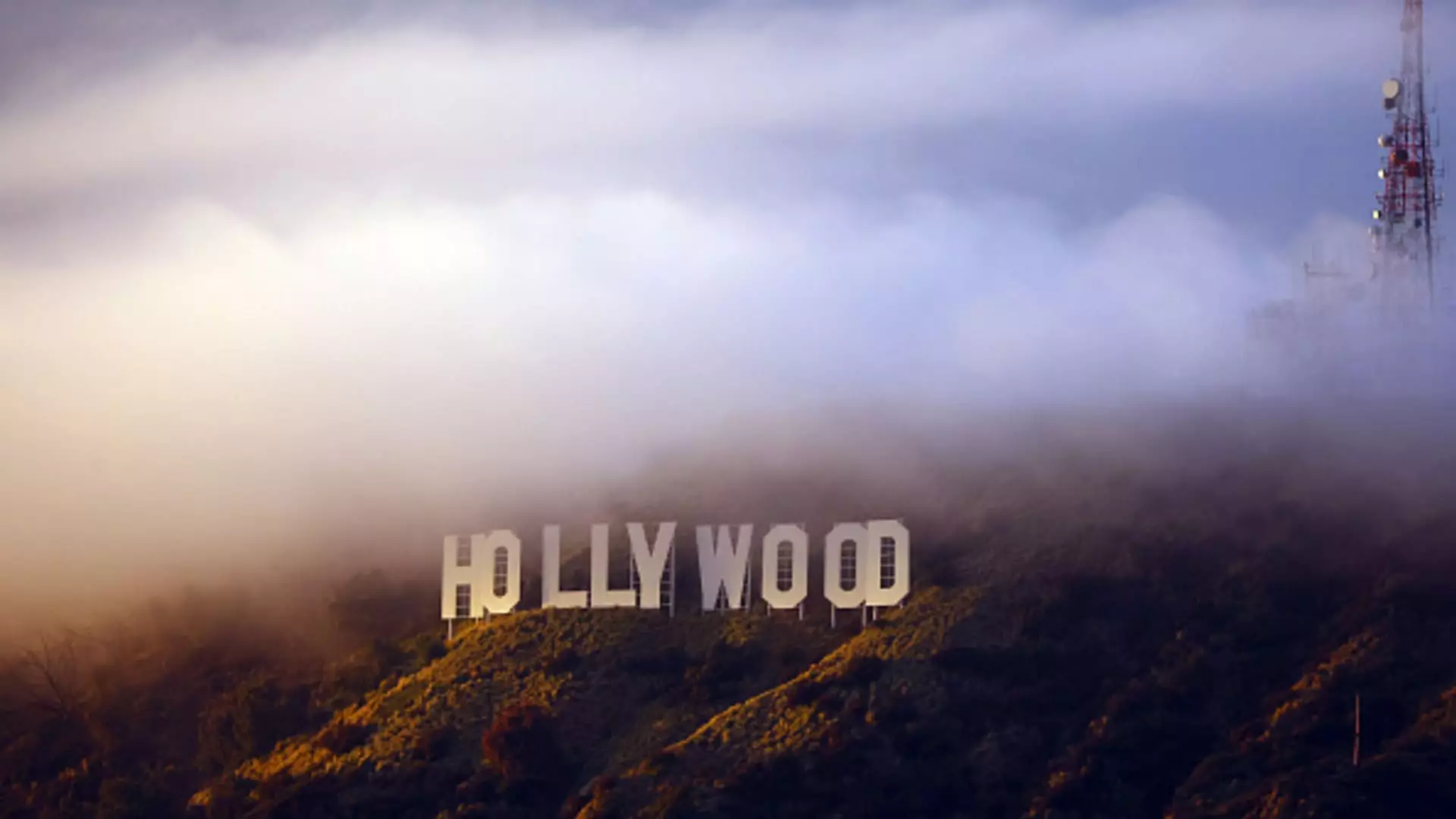The entertainment industry has long been a staple of American culture, and its economic impact resonates far beyond the borders of the United States. With President Donald Trump’s recent declaration of a trade conflict targeting Canada, Hollywood finds itself in a precarious position. Dubbed “Hollywood North,” Canada has solidified its identity as a critical production partner for American films and television shows, providing a wealth of resources that could face unprecedented challenges due to tariff implications.
For decades, Canada has served as a magnet for U.S. studios, drawn to the country’s robust tax incentives, stunning landscapes, and highly skilled workforce. The synergy has been mutually beneficial, with American productions injecting significant revenue into local economies while simultaneously benefiting from a diverse pool of talent. Trump’s trade policies, particularly his imposition of tariffs on Canadian goods, threaten to disrupt this longstanding rapport. Industry insiders are voicing concerns that retaliatory measures from Canada could undermine the viability of future collaborations, potentially jeopardizing the tax credits that entice U.S. filmmakers to venture northward.
The trade war’s ramifications extend beyond financial incentives. The collaboration between Hollywood and Canada has fostered strong cultural ties, creating a landscape where storytelling transcends borders. This relationship has thrived largely due to a mutual understanding of the needs of filmmakers on both sides, but heightened tensions could erode this sense of camaraderie.
Trump’s recent tariff announcements, which include a significant 25% import tax on various goods from Canada and Mexico, are expected to reverberate adversely within the film industry. Experts point out that while many studios predominantly source materials locally, specific items—particularly textiles for costumes and specialty construction materials—are often imported, and these could become considerably more expensive under new tariffs. Although it might be routine for studios to utilize local suppliers for most production needs, the costs associated with imported materials could still strain budgetary plans.
Moreover, a separate concern emerges from the broader economic implications of the tariff policies. Industry professionals fear that escalating costs could prompt producers to trim budgets, potentially impacting various aspects of production quality. This would not only affect the creative output of Hollywood but could also lead to job losses in an industry already burdened by the aftershocks of the COVID-19 pandemic and recent labor strikes.
While production budgets are paramount, the industry’s fortunes also hinge on consumer behavior. The interconnectedness of Hollywood and the everyday American consumer creates a critical vulnerability; as prices rise due to tariffs, discretionary spending is likely to decrease. This raises a pivotal question: how will families allocate their entertainment budgets amidst escalating costs for goods? Film industry insiders indicated grave concerns that cinema trips may be one of the first luxuries consumers forgo when coping with financial strains.
Past cinematic trends have shown that recessions often lead to a decline in theater attendance, and with the specter of inflation looming, the industry may brace itself for another downturn just as it was beginning to recover from the worst of the pandemic. The box office performance has traditionally relied on disposable income and a willingness to engage with the cinematic experience; without an audience, the effects could ripple across all sectors associated with film production.
Facing these unpredictable variables, Hollywood’s resilience will be put to the test once again. While industry insiders maintain that studios will find ways to adapt to the sanctions imposed by Trump, it is unclear how effectively they can tackle the potential fallout from decreased consumer demand. The big question remains whether the allure of blockbuster releases slated for the coming years will be enough to entice audiences back into theaters or if the combined pressures of increased production costs and economic uncertainty will ultimately curtail their appetite for cinema.
As the industry navigates these turbulent waters, vigilance and adaptability will be crucial. The extent to which Hollywood can align its production strategies with economic realities, while maintaining its creative integrity, will define its future trajectory amid these complex challenges. In an era of unpredictability, it is clear that the stakes have never been higher for the global entertainment powerhouse that is Hollywood.

